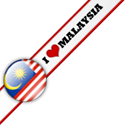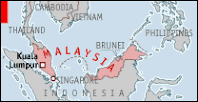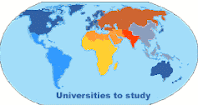
Sejarah awal Pulau Pinang disamarkan oleh waktu dan hakikat bahawa kurangnya kajian yang dibuat terhadap penduduk dan kependudukan awal di negeri ini, terutamanya yang berpusatkan zaman pra-British.
Ghairah sarjana tempatan dan luar Negara tercurah pada kajian kedatangan British dan perkembangan negeri ini setelah mereka mendarat dan mengambil alih pentadbirannya. Oleh hal yang demikian, jiwa, zaman dan pergerakan koloniallah yang diberi ruang dan kata.
Pada zaman pascakolonial, suatu kajian yang berpusatkan kejayaan colonial dan sudut pandangan mereka bukan sahaja agak melawan arus dan melawan kesedaran kebangsaan setempat, malah tidak berhadapan dengan kenyataan. Oleh hal yang demikian, kajian yang berpaksikan colonial sebegini dapat dianggap sebagai buta sejarah atau sengaja menyembunyikan sebahagian kebenaran yang jelas terbentang di depan waktu.
Kenyataan sebenarnya sudah terbentang jauh sebelum kedatangan Francis Light dan gerombolannya. Sebelum wakil Syarikat Hindia Timur Inggeris mendarat di pantai Tanjung Penaga di utara pulau itu (di samping timur Padang Kota dewasa ini), sudah terdapat bukti-bukti pendudukan dalam bentuk tapak pendudukan purba di Seberang Perai terutama sekali di Guar Kepah dan Cherok Tok Kun dan di pulau pula yang lebih muda di Datok Keramat, di Batu Uban, di Bayan Lepas, di Balik Pulau dan lain-lain, yang semuanya berlaku sebelum 1786, sesetengahnya ribuan tahun sebelum pendaratan Francis Light.
Sejarah menyatakan dan menafsirkan hak. Sejarah juga melukiskan akar di kampong dan tapak kaki di pantai waktu. Sejarah yang kiat sebelah, lebih berpihakkan penjajah dan melupakan hakikat sebenar ialah kesalahan besar yang memesongkan hak ini, jati diri dan kebanggaan bangsa.
Di Pulau Pinang sendiri, tidak termasuk Seberang Perai terutama sekali yang berada di bawah kekuasaan Kedah, lama sebelum 1786 sudah mempunyai bukti pendudukan, malah terdapat sejumlah sekitar 20 keluarga di sini sewaktu Light mendarat. Jumlah ini bukan jumlah yang kecil di sebuah pulau yang tidak besar. Di Seberang Perai kependudukan berusia ribuan tahun sudah wujud sebelum England pernah pun mendengar wujudnya negeri-negeri Tanah Melayu dan kekayaan serta letaknya yang strategic di Selat Melaka.
Demi membentangkan sejarah yang lebih panjang dan benar inilah, ahli arkeologi memperkenalkan kita kepada prasejarah Seberang Perai dan Pulau Pinang dan memperlihatkan betapa kedatangan Francis Light hanyalah riak kecil dalam lautan sejarah, kerana negeri Pulau Pinang sudah lama diduduki dan berdampingan dengan tamadun tinggi. Dengan merujuk kepada kajian-kajian terdahulu seperti kajian G.W.Earl yang menggali dan mengkaji di Guar Kepah, di bahagian utara Seberang Perai yang terdiri pada awalnya daripada timbunan kernagan yang tinggi, ahli sejarah tempatan menggalurkan gerak sejarah yang hanya tercatat oleh bukti arkeologi. Selain kerangan yang digunakan sebagai bahan makanan dan perdagangan, di dalam timbunan ini juga ditemukan alatan, tulang rusa dan lebih penting rangka manusia. Usia temuan ini dianggarkan sekitar 5,000 hingga 6,000 tahun. Penggaluran itu menunjukkan mereka berbangsa Melanesia dan menggunakan alat batu. Kajian kedua, oleh Callenfels (1935), iaitu 70 tahun setelah penggalian yang pertama ini, menambah maklumat awal tadi. Ditemukan juga seterusnya 41 rangka manusia, semuanya daripada tiga tapak penggalian. Penemuan jumlah yang cukup besar ini terus menawarkan lebih banyak maklumat tentang cara hidup, malah cara mati masyarakat awal ini. Masyarakat ini boleh digolongkan ke dalam kumpulan Neanderthal Awal.
Mereka tinggal di kawasan lembah Sungai Muda dan dekat kepada pantai; oleh hal yang demikian, mereka mendapatkan bahan makanan daripada paya, hutan, pantai dan laut. Menarik juga ialah hakikat bahawa sudah terdapat tembikar, cara pengebumian yang konsisten dan sisa makanan. Mereka suka mengunyah pinang (buah dari pokok yang tertera di bendera Pualau Pinang), sejenis pengkhayal berkesan ringan. Bentuk fizikal mereka lebih tinggi daripada ramai penduduk yang ditemui rangkanya di tempat-tempat lain, berambut kerinting, berkulit hitam dan oleh itu mempunyai banyak kesamaan dengan ras Australoid.
Ahli arkeologi tersebut menyimpulkan:
… masyarakat Neolitik Guar Kepah ialah suatu masyarakat yang bersistem, mempunyai adat istiadat pengebumian, mengunyah pinang, mengutip siput kerang, memburu binatang, menggunakan tembikar, hidup di sekitaran laut dan mendapatkan air tawar dari Sungai Muda.
Bukti prasejarah Pulau Pinang dan Seberang Perai seterusnya ditemukan oleh Low pada sekitar 1840-an, kali ini dalam bentuk yang lebih canggih, iaitu prasasti atau inskripsi di Cherok Tok Kun, Seberang Perai Tengah. Walaupun masih terdapat percanggahan tafsiran tentang aksara dan bahasa yang digunakan tetapi yang jelas ialah bahasa Benua India sudah memasuki Tanah Melayu dan usia prasasti ini tidak lewat daripada kurun keempat masihi.
Berikutnya satu lagi inskripsi atau prasasti membawa kita ke zaman yang lebih muda, sekitar satu kurun setelah inskripsi Cherok Tok Kun. Bahasanya ialah Sanskrit dengan huruf Pallava-Grantha. Dalam kajian Mohd Suppian, Pulau Pinang dilihat dalam peta budaya dan penempatan yang lebih besar, iaitu dalam deretan Lembah Bujang di utara yang berusia 1,500 tahun dan Selinsing di selatan yang berusia sekitar 2,000 tahun. Letaknya yang strategic di antara kedua-dua penempatan awal ini juga menjadikannya penerima kesan kedua-duanya.
Mahani (2008) memantau kembali peristiwa yang berlaku sebelum dan sesudah kedatangan British ke Pulau Pinang. Beliau mempertegas hakikat bahawa telah berlaku beberapa “penipuan” oleh British terhadap Kedah, namun hal ini tidak mendapat perhatian dan perbincangan yang lebih mendalam atau meluas supaya fakta sejarah yang berprasangka terhadap penduduk asli dan berpihak kepada penjajah dapat dibetulkan.
Sewaktu seorang pelayar British, Lancaster dan anak-anak buahnya mendarat di Pulau Rimau (di selatan Pulau Pinang) pada tahun 1593, beliau telah juga menjelajah Pulau Pinang ini, yang pada waktu itu tiada ditemukan penduduknya, walaupun belum jelas sama ada beliau sampai atau tidak di bahagian utara pulau itu, yakni di tempat yang lebih banyak bukti pendudukan ditemui.
Mengikut Mahani, zaman kedatangan British ialah zaman kerakusan Syarikat Hindia Timur Inggeris dan Belanda di suatu pihak, dan di suatu pihak yang lain keinginan Sultan Kedah untuk mencari teman dan perlindungan daripada ancaman Siam, malah kaum kerabatnya sendiri pada waktu itu. Perjanjian awal pemajakan pulau dan akhirnya pendudukan British berlatarkan keinginan ini. Namun begitu, janji British untuk membantu Kedah malah wang pemajakan juga tidak dipenuhi dan apabila sultan menyekat perdagangan ke Pulau Pinang sebagai tindak balasnya, berlakulah suatu peperangan yang terus melemahkan tuntutan Kedah. Mahani menjelaskan bahawa setelah ditimbulkan Bonney bahawa pengambilan Pulau Pinang tidak sah dan mungkin merupakan rampasan daripada Kedah, tidak pula banyak kajian susulan dikerjakan.
Demikianlah juga apabila Mahani cuba menjawab soalan “Siapakah yang membuka Pulau Pinang?” Jawapannya dimulakan dengan menggalurkan titik-titik awal pendaratan berbagai-bagai kumpulan manusia yang berasal dari berbagai-bagai pulau di Nusantara. Namun begitu, bahagian ini sering dipadamkan oleh sejarawan British yang berkepentingan dan mereka yang tidak membuka mata terhadap peristiwa yang lebih jauh daripada pendaratan Light.
Walaupun tidak dipertikaikan hakikat bahawa Light “membuka pelabuhan Pulau Pinang dan memajukan negeri itu” tetapi pernyataan bahawa pulau itu tidak berpenghuni oleh beberapa sejarawan dan pencatat masih diragukan. Pertama, apabila Light mendarat, beliau sendiri menemukan sekitar 30 orang penduduk di Tanjung Penaga. Antaranya ialah Nakhoda Kechil, kemungkinan besar ketua kumpulan penduduk yang ditemukan itu. Merekalah yang diupah untuk menebang hutan dan belukar bersama-sama beberapa penduduk Kedah daratan lainnya.
Naratif lisan penduduk di pulau merujuk kepada orang-orang dari Sumatera sebagai pendatang awal, yang pada mulanya pernah juga dikenali sebagai Pulau Kesatu. Orang Kedah pula mengenali bahagian timur laut dan tanjungnya sebagai Tanjung Penaga. Inilah nama asli yang digunakan orang Melayu, malah oleh pentadbiran Kompeni sehingga tahun 1800.
Seterusnya Mahani merujuk kepada catatan Macalister yang mengakui bahawa orang Melayulah yang pertama membuka pulau ini dan sudah pun ada beberapa orang nelayan di sana. Perkuburan yang besar di sebelah pantai timur juga ialah bukti tambahan kepada hakikat pendudukan awal di Batu Uban, Datok Keramat dan Jelutong yang telah didirikan oleh kumpulan-kumpulan yang berasal dari Sumatera (sebab-sebab mereka berhijrah ke Pulau Pinang akan disusuli kemudian). Penempatan penting Batu Uban dibuka oleh Haji Mohammad Salleh (Raja Nan Intan Ibni Almarhum Tengku Paeh Sebatang) dan anak buahnya sebelum pendaratan Light, mungkin antara 1710 hingga 1734. Mereka menjelajah dan membangunkan kawasan ini hinggalah ke Tanjung Penaga. Mengikut Mahani lagi, Light telah mendarat di kawasan yang dimiliki oleh Nakhoda Kechil, iaitu adik kepada Haji Mohammad Salleh.
Seorang lagi pembuka Pulau Pinang awal, Datok Janatun pula dating bersama-sama pengikutnya dari Kedah apabila Sultan Kedah “menghadiahkan 100 ekar tanah di pantai barat Pulau Pinang” kepada mereka. Demikianlah, bukit dan lembah diteroka 15 tahun sebelum Light mendarat.
Setelah itu, penduduk Melayu banyak membantu penerokaan Pulau Pinang dan mendirikan beberapa buah kampong seperti Bayan Lepas, Permatang Damar Laut, Teluk Kumbar dan Balik Pulau. Mereka berasal dari selatan Setul (daerah Melayu selatan Siam), Batu Bara, Deli, Minangkabau dan Brunei. Lanjutannya, terbentuklah masyarakat Melayu yang berpentadbiran gaya tersendiri tetapi masih beraja di Kedah.
Kemudian Mahani menggalurkan sejarah Seberang Perai, yang dianggapnya lebih terabai. Seberang Perai yang merupakan sebahagian Kedah, dan selepas dipajakkan kepada British, dikuasai sepenuhnya oleh mereka pada tahun 1800 setelah membayar wang pajakan tahunan itu. Namun begitu, seperti disebutkan sebelum ini, Seberang Perai juga dipajak dengan perjanjian bahawa perlindungan Kedah terhadap Siam ditingkatkan. Malangnya, bahagian perjanjian yang ada unsure pajakan dan bukan penyerahan dalam perjanjian ini tidak ditepati. Kelalaian di pihak Kedah dan muslihat di pihak British menyaksikan Seberang Perai terlepas ke tangan British, yang inginkannya menguasai Kuala Perai ynag sudah mula menyaingi British dan kononnya juga menyekat pergerakan lanun.
Setelah Kedah diserang Siam, Seberang Perai mendadak bertambah penduduknya, menambah khususnya kepada kampung-kampung Kedah yang sudah lama wujud di sini. Kampung Bagan Ajam, Telok Ayer Tawar, Penaga, Bagan Jermal, Sungai Dua, Permatang Tok Jaya dan lainnya berkembang cepat dengan penduduknya. Sementara itu, orang Melayu Kedah membuat pakatan untuk menyerang Siam.
Masalah tafsiran perjanjian ditimbulkan kembali oleh Mahani dan nampaknya berlaku salah faham atau harap di kedua-dua belah pihak. Sultan Kedah pernah menulis mengingatkan janji British terhadap Kedah yang tidak ditunaikan.
Setelah peperangan dengan Siam, Kedah dan Seberang Perai kembali aman dan masyarakat mengukuhkan akar mereka di sini. Sebahagian pelarian perang telah kembali ke Kedah untuk mendirikan semula hidup mereka. Namun begitu, ramai juga yang terus menetap di sini.
Kajian diteruskan dengan penyelidikan terhadap system kepimpinan tempatan dan ekonomi penduduknya yang digunakan untuk menampung keperluan Pulau Pinang. Orang Melayu membuka tanah dan menanam padi. Persaingan antara bangsa berlaku dalam perniagaan dan beberapa tindakan telah diambil untuk mengimbangi keadaan.
Profil kebahasaan awal di Pulau Pinang agak sukar dikesani kerana kekurangan bukti. Sebab itu, deskripsi profil kebahasaan awal sering kali memasukkan Pulau Pinang ke dalam peta besar Kedah dan utara Semenanjung. Sementelah pula, penduduk Pulau Pinang mungkin hamper semuanya, jika dapat dikatakan demikian, merupakan pengungsi dari Kedah atau dari luar, terutama Sumatera. Penduduk awal Pulau Pinang yang dibawa masuk dari Kedah membentuk kelompok pengguna dialek Melayu Kedah di pulau ini. Namun begitu, akibat perubahan masa dan ruang, dialek Melayu Kedah yang dituturkan di Pulau Pinang mungkin berbeza sedikit dengan dialek di tanah asalnya.
Pola penggunaan bahasa di Pulau Pinang semakin berwarna-warni apabila imigran dari luar dibawa masuk atau dating ke pulau ini. Pola penggunaan bahasa yang awal bercampur aduk ini boleh dihuraikan berdasarkan pandangan Shellabear. Dari sudut ini, tiga jenis bahasa digunakan di Pulau Pinang, iaitu bahasa Melayu tinggi, bahasa Melayu tulen, iaitu “bahasa atau dialek yang digunakan oleh orang Melayu sebagai wahana untuk berhubungan antara satu sama lain” dan bahasa Melayu basahan Negeri-Negeri Selat, yakni “bahasa atau dialek Melayu yang digunakan oleh suku kaum yang berbeza sewaktu komunikasi kebahasaan antara mereka”.
Noriah merumuskan bahawa banyak sekali ragam bahasa digunakan di Pulau Pinang pada kurun ke-18 dan ke-19, yang juga sebahagiannya hasil percampuran unsure-unsur bahasa berbagai-bagai bangsa dan cara mereka berkomunikasi. Di banyak tempat, bahasa kacukan telah tercipta, di samping bahasa Melayu yang tulen.









